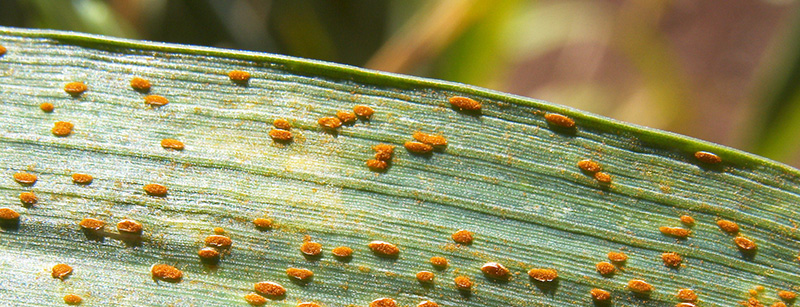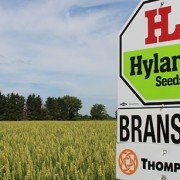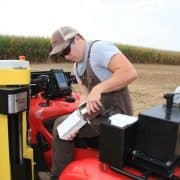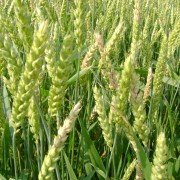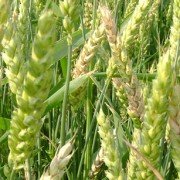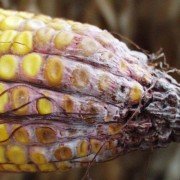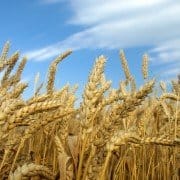Wheat leaf diseases
What increases the risk of infection?
- Cool temperatures
- Prolonged periods of wet weather
- Rust problems in the southern US states and Mexico could mean the same for Ontario as storm systems carry the spores north
- Planting susceptible varieties.Planting after another cereal or corn crop.

How do I know when to apply a fungicide?
The higher the price of wheat, the more economical treatment is. In general, if trace amounts of rust, powdery mildew, or leaf spot are present on the flag leaf in the early boot stage of development, and infection below the flag leaf is moderate or moderately severe, it’s highly likely that severe infection of the flag leaf will occur.
Applying a fungicide is cost-effective
Fungicides are most effective if applied as a preventive treatment. Application after the flag leaf is already infected, may result in little or no yield increase. Fungicides are well utilized by growers to protect their investment and help increase plant heath and yield.
Rust diseases
Leaf Rust
Identification: small, orange pustules.
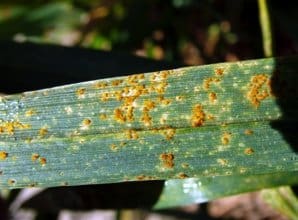
Stripe Rust
Identification: yellowish pustules running parallel to the leaf veins.
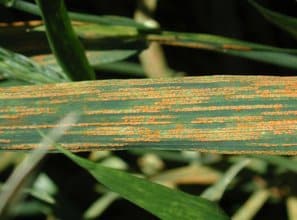
Stem Rust
Identification: dark, reddish brown pustules on leaves, stems and heads.

Other diseases
Stagonospora Glume Blotch
Identification: Irregular, grey to brown lesions that are speckled with black picnidia.
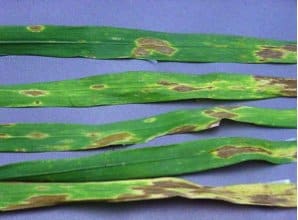
Threshold: 1-2 lesions on the leaf below the flag leaf up to booting, or 1-2 lesions on the flag leaf at head emergence.
Management and/or treatment:
- Rotation with crops other than cereals
- Plowing down cereal residue and volunteer wheat
- Fungicide seed treatment or foliar fungicides including: Prosaro, Proline & Folicur
Septoria Leaf Spot
Identification: Reddish-brown lesions with a yellow halo, black picnidia embedded in the lesions.

Threshold: 1-2 lesions on the leaf below the flag leaf up to booting, or 1-2 lesions on the flag leaf at head emergence.
Management and/or treatment:
- Rotation with crops other than cereals
- Plowing down cereal residue and volunteer wheat
- Fungicide seed treatment
- Foliar fungicides including: Headline, Quilt, Proline, Prosaro, Acapela and Folicur
Tan Spot
Identification: Tiny dark spot in a tan lesion with a narrow to broad yellow halo.
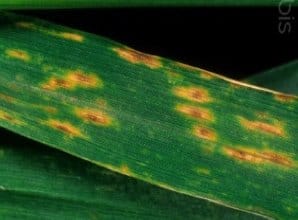
Threshold: Generally 25% of leaves with one or more lesions.
Management and/or treatment:
- Include non-host crops such as other cereals, corn, soybeans and alfalfa in the crop rotation
- Plant resistant varieties
- Removal of cereal residues through tillage
- Foliar Fungicides including Quilt, Headline, Acapela, Proline, Folicur, Twinline and Stratego.
Powdery Mildew
Identification: Fluffy white to grey fungal growth beginning on the lower leaves.
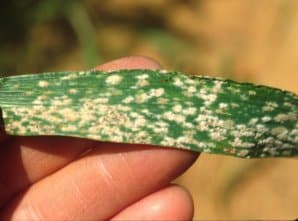
Threshold: 5-10% of lower leaves affected early in the season, 1% of the flag leaf affected and 3-5% of the second leaf later in the season.
Management and/or treatment:
- Plant resistant varieties and crop rotation
- Removal of crop residue through tillage.
- Fungicides include: Headline, Acapela, Prosaro, Twinline, Folicur and Stratego.
Barley Yellow Dwarf Virus
Identification: Stunting and yellowing, reddening or purpling of leaf tips.

Threshold: 5-10% of lower leaves affected early in the season, 1% of the flag leaf affected and 3-5% of the second leaf later in the season.
Management and/or treatment:
- Avoid early planting.
- Control cereal aphid populations since it is only transmitted by aphids.
- Utilize an insecticide on heavy aphid populations.
Soil-borne Wheat Mosaic
Identification: Yellow to light green streaks parallel to the leaf veins.
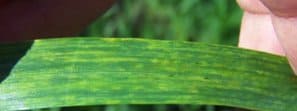
Management and/or treatment:
- Plant resistant varieties.
- Improve field drainage.
- Avoid soil compaction.
- Long rotations with at least 4 years between winter wheat crops.
- Plant later in the fall, when soils are cooler and less favourable for development of the virus.
Wheat Spindle Streak Mosaic
Identification: Spindle shaped lesions with a green centre.

Management and/or treatment:
- Plant resistant varieties.
- Improve field drainage.
- Avoid soil compaction.
- Long rotations with at least 4 years between winter wheat crops.
- Plant later in the fall, when soils are cooler and less favourable for development of the virus.
Sources: OMAFRA, Diseases of Field Crops: Cereal Diseases; Colorado State University

